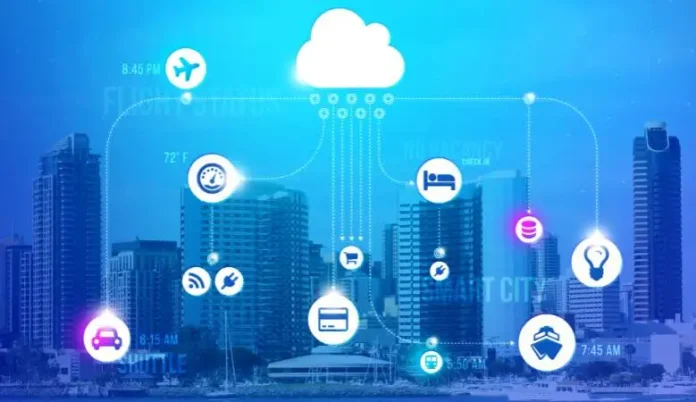Technology is reshaping our world at breakneck speed, and smart cities have evolved from a futuristic dream to a tangible reality. The heart of this urban revolution lies a powerful enabler: fiber optic networks. These invisible threads of light are weaving a tapestry of connectivity that promises to transform our cities into hubs of efficiency, sustainability, and enhanced quality of life.
The Foundation of Smart Cities
Smart cities leverage cutting-edge technologies to improve urban life, from traffic management to energy conservation. However, the true potential of these innovations can only be realized with a robust, high-speed communication infrastructure. This is where fiber optic networks come into play, serving as the nervous system of smart cities.
Speed and Capacity: The Fiber Advantage
Fiber optic cables, composed of thin strands of glass or plastic, transmit data using light pulses. This technology offers several key advantages:
- Unparalleled speed: Fiber optics can transmit data up to 100 Gbps, surpassing traditional copper wire networks.
- Massive capacity: A single fiber cable can carry more data than conventional alternatives.
- Low latency: The speed of light transmission means near-instantaneous data transfer, crucial for real-time applications.
- Future-proof: Fiber infrastructure can be upgraded to handle higher capacities without replacing the physical cables.
These attributes make fiber optic networks ideal for supporting smart cities’ diverse and data-intensive needs.
Transforming Urban Landscapes
The integration of fiber optic networks is catalyzing a wave of innovations across various aspects of urban life:
Intelligent Transportation Systems
Smart traffic management relies on real-time data from sensors, cameras, and connected vehicles. Fiber optic networks enable:
- Adaptive traffic signals that adjust based on current traffic patterns
- Real-time public transit information for commuters
- Automated parking systems that guide drivers to available spots
The result? Reduced congestion, lower emissions, and smoother commutes for city dwellers.
Energy Efficiency and Sustainability
Fiber-powered smart grids are revolutionizing energy management:
- Smart meters provide real-time energy consumption data
- Demand-response systems optimize energy distribution
- Integration of renewable energy sources becomes more efficient
These advancements reduce energy waste, lower utility costs, and a smaller city carbon footprint.
Public Safety and Emergency Response
High-speed, reliable communication is crucial for public safety:
- Advanced surveillance systems with AI-powered analytics
- Faster emergency response through connected infrastructure
- Early warning systems for natural disasters
Fiber optic networks ensure critical information reaches first responders and citizens immediately.
Enhanced Public Services
From education to healthcare, fiber enables improved public services:
- Telemedicine applications for remote healthcare
- Distance learning opportunities with high-quality video streaming
- E-government services for streamlined bureaucracy
These advancements make essential services more accessible and efficient for all residents.
Overcoming Challenges in Implementation
While the benefits of fiber-powered smart cities are clear, several hurdles must be addressed:
Infrastructure Investment
Deploying citywide fiber networks requires significant upfront costs. However, long-term benefits often outweigh initial expenses:
- Reduced maintenance costs compared to copper networks
- Increased property values in fiber-connected areas
- Economic growth through improved connectivity
Cities must explore innovative funding models and public-private partnerships to finance these projects.
Digital Divide Concerns
As cities become “smarter,” there’s a risk of exacerbating existing inequalities. To ensure inclusive growth:
- Prioritize equitable access to fiber infrastructure
- Implement digital literacy programs
- Offer affordable connectivity options for low-income residents
By addressing these concerns, cities can harness the full potential of fiber networks to benefit all citizens.
Privacy and Security
The interconnected nature of smart cities raises valid privacy and security concerns:
- Implement robust encryption and cybersecurity measures
- Establish clear data governance policies
- Educate citizens on digital privacy best practices
Balancing innovation with data protection is crucial for maintaining public trust in smart city initiatives.
The Road Ahead: Emerging Technologies and Fiber
As we look to the future, several emerging technologies will further leverage the power of fiber optic networks:
5G and Beyond
While 5G wireless networks grab headlines, they rely heavily on fiber backhaul for their high-speed capabilities. The symbiosis between fiber and advanced wireless technologies will drive smart city innovations to new heights.
Edge Computing
Edge computing brings processing power closer to the data source to process the vast amounts of data generated by smart city sensors and devices. Fiber networks provide the crucial link between edge nodes and central data centers.
Artificial Intelligence and Machine Learning
The low latency of fiber networks enables real-time AI applications that can analyze urban data streams, making predictive decisions to optimize city operations.
Illuminating the Path Forward
As we stand on the brink of a new urban era, fiber optic networks shine as beacons of progress. They illuminate the path towards cities that are not just “smart” but truly intelligent, responsive, and human-centric. By embracing this technology, we can create urban environments that enhance our lives, protect our planet, and unlock new realms of possibility.
The journey towards fully realized smart cities is ongoing, with challenges to overcome and ethical considerations to navigate. However, the potential benefits—from improved quality of life to sustainable urban development—make this a journey worth undertaking. As we weave these light networks through our urban fabric, we’re not just connecting buildings and devices but connecting people to a brighter, more connected future.
In the end, the true measure of a smart city isn’t just in its technological prowess but in how it enhances the lives of its citizens. With fiber optic networks as their foundation, our cities are poised to become more than just smart—they’ll become vibrant, sustainable, and equitable communities that we’re proud to call home.














